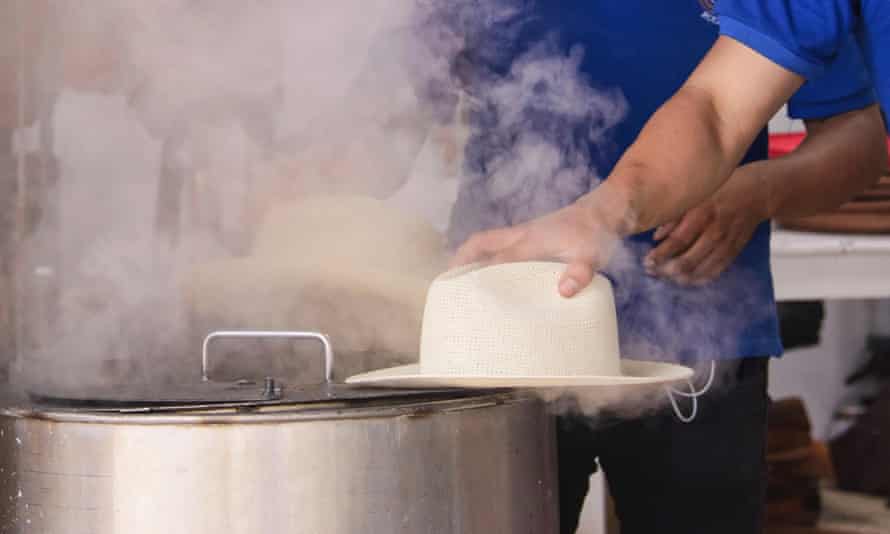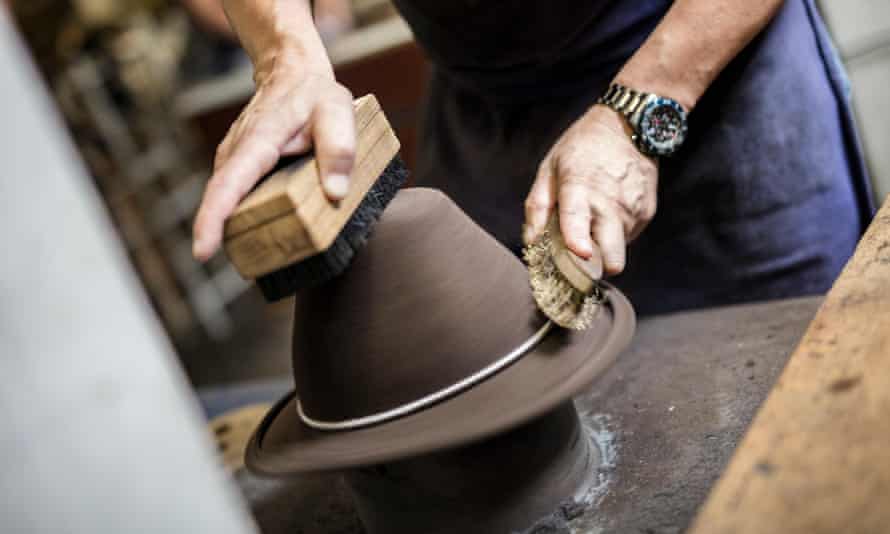Shared from Lifestyle | The Guardian
Despite growing up under the tyranny of “no hat, no play”, it wasn’t until my late 20s that I started wearing a hat every time I was in the sun (motivated mostly by the threat of accelerated ageing). To make it fun, I started collecting hats from iconic Australian destinations (Bondi Icebergs, Cottesloe beach, Noosa Heads etc).
These hats may be the only thing in my wardrobe that are treated appallingly. They are stained by chlorine, sunscreen and salt. They get left at the bottom of beach bags and backpacks, squished between water bottles, books and towels.
Hats should be treated with more care than this, not least because we wear them when braving the elements. But more care does not necessarily mean frequent care, says Hamish McLeod, the store and sales manager for Strand Hatters in Sydney. For fabric and felt hats, a dry clean or hand wash once every six months or so should be enough, unless there are visible dirt, sweat or makeup stains inside it. For those, McLeod says to “use a wet cloth and gently dab the affected areas. But do not wipe”.
From there, care instructions vary depending on the kind of hat.
Wool hats and caps
From fedoras to ascot caps, McLeod says that “wool is a tough one as it quite easily collects different fibres such as hair and dust”. He recommends purchasing a hat brush and brushing your hat after each use, to “take away any dust or any sort of marks that may discolour your hat”.
Alternatively, errant fibres can be removed with double-sided sticky tape or a lint roller. If your hat is out of shape, he suggests steaming it with the boiling water from an iron or a kettle to loosen the fibres and remove wrinkles and creases.
Sun hats, Panamas and boaters
Straw is a particularly delicate fibre, so hats made from it need to be handled with extra care.

McLeod says one of the worst things you can do to shaped straw hats, such as a Panama or fedora, is taking them off by grabbing them at the front of the crown. The pressure this places on the pointy ends of the crown can cause the straw to break.
Instead, you should always take your hat on and off by the brim. Straw also dries out when it is worn in the sun. McLeod suggests using steam to restore a straw hat’s moisture and prevent future breakages.
Cloth caps and bucket hats
Most caps and bucket hats are made of cotton, but pay attention to the care instructions on your particular hat, as things like embroidery can impact how they should be washed.

McLeod suggests hand-washing caps and bucket hats using a bucket of warm water and a small amount of washing powder. “After using your hands to remove any stains or marks, allow it to soak for 10 to 15 minutes before hanging it up to dry.”
If the visor of your cap is out of shape, use steam to soften it before bending it back into shape.
Storing hats at home and on the road
They may sound old-fashioned, but hat boxes do serve a purpose. They stop your hat collecting dust when you’re not wearing it; alternatively, keeping hats under a plastic cover will do the same job.
Wide-brimmed hats should be stored upside-down or on a hat stand to avoid ruining their shape.
Outside the home, travelling with hats can be a bit awkward. If you are travelling on an aeroplane, McLeod recommends placing the hat in the bottom of your luggage and building around it. “Fill the inside of the hat with smaller items and stabilise the outside [crown and brim] of the hat with larger items to ensure it cannot be damaged throughout transit.”
If you are travelling by train or car, he suggests purchasing a Klipsta hat clip. He says this “accessory allows you to attach your hat to the side or back of your bag or even to the back of your car seat without the hat being affected by its surroundings”.
Matching your hat to the weather
We may be more likely to reach for a straw hat when the sun is out, but McLeod says they don’t always provide the best protection. Since they are made by weaving long strands of straw, “there is always a chance of having small gaps between each weave, ultimately allowing UV rays to hit your skin”.
Alternatively, wool hats have UPF50+, but wool can be too hot to wear in the sun for long periods. If you decide to take a wool hat to the beach, McLeod says you’ll need to be careful of salt marks, as they can react with the dyes and cause discolouration. “If you do get your wool or fur felt hat wet, we advise that you use a cloth or towel with some clean water on it and give it a wipe down to remove any salt crystals.”
On the other hand, as long as they are properly cared for afterwards, wool hats can handle the rain really well. “When you take it off, make sure you allow it to dry without damaging the shape,” McLeod says.” He suggests the best way to do this is by placing the hat upside-down on its crown.
Images and Article from Lifestyle | The Guardian

